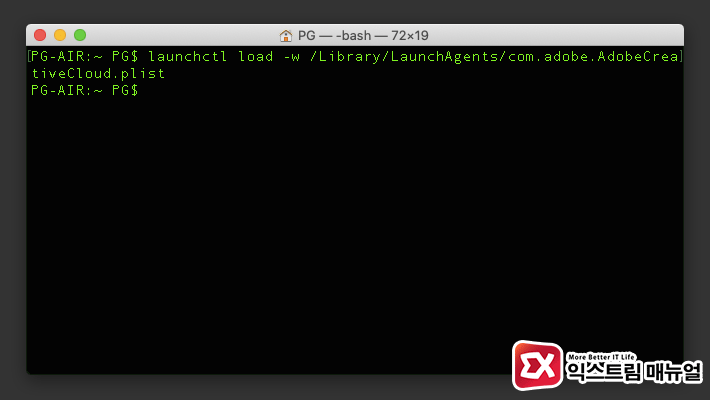UPDATE (2020-02-16): Reports are coming in that this doesn’t work with the newest Adobe CC programs since they’re rotating the logs now. If this doesn’t work for you, it may be best to run a temporary file cleanup tool daily, such as Disk Cleanup included in Windows, CCleaner (warning: since Avast bought it, it’s a bit spammy now), or similar. Alternatively, if you are handy with such things, write a batch file that deletes the log files and add it to Task Scheduler as a task to run when you normally won’t be active on the machine.
- Creative Cloud App Won't Open Stuck Loading Mac Os
- Creative Cloud App Won't Open
- Creative Cloud App Won't Open Stuck Loading Macbook
Creative Cloud App Won't Open Stuck Loading Mac Os
Creative Cloud for desktop is a great place to start any creative project. Quickly launch and update your desktop apps; manage and share your assets stored in Creative Cloud; download fonts from Adobe Typekit or high-quality royalty-free assets right within the app; and showcase and discover creative work on Behance. Create a new user and assign the user administrative rights, boot into that users account. Log into the Creative Cloud. Open Creative Cloud. Its possible your current accounts is corrupt. If you can run as root the problem seems to be with your account, not Adobe.
UPDATE (2019-10-21): Adobe’s support has noticed this post and is attempting to have the bug behind this issue fixed. See the comments!
I recently discovered that Adobe’s Creative Cloud software left a massive pile of PDApp.log files in my temporary directories, as well as a few others such as CEP8-PPro.log and AdobeIPCBroker.log. These were taking up quite a bit of space, and I’ve looked up PDApp.log only to discover that some people have had serious issues with PDApp.log consuming all available free space on their drives after a while. One user reported having a 600GB log file! Needless to say, several people have asked how they can control these log files, but as usual, Adobe support and forum users offered no actual solutions.
I’m here with your solution!
On Windows, you’ll need to open Task Manager and kill all Adobe processes to unlock the log files (not just stuff starting with Adobe, but also Creative Cloud processes and any node.exe instances they started) then open an administrative command prompt and type the following two commands:
This goes to your temporary directory, deletes the PDApp.log file (if you get an “in use” error here you missed an Adobe process in Task Manager), and creates a file symbolic link to a special device called NUL: which is literally the “nothing” device. When the Adobe apps write to PDApp.log now, all writes will succeed (no errors) but the data will simply be discarded. You can repeat the delete/mklink process for any other Adobe logs you don’t want around anymore. Best of all, because symlinks on Windows require admin privileges to modify, the Adobe apps won’t rotate these fake log files out! Be aware that cleanup tools like CCleaner or Disk Cleanup may delete these links, so you may need to repeat these steps if you delete your temp folder contents with a cleaning tool. You may want to write a small batch file to run the commands in one shot if you like to delete temp files frequently.

Creative Cloud App Won't Open
On Mac OS (note: I haven’t tested this myself, but it should work) you should be able to kill all Adobe processes with Activity Monitor, then open Terminal, then type this:
Linux/UNIX administrators will recognize this as the classic “redirect to /dev/null” technique that we all know and love. Since I have no way to test this, Adobe may rotate these links out, but you can use this command to lock down the symlink if it does:
This will ask for your account password since it requires privilege escalation. This command makes the link owned by “root” which means normal user programs can’t rename or delete it, though they can still write through the link, so the trick will continue to work.
UPDATE: Some have asked what the purpose of the PDApp.log file is and whether it’s safe to do this. The answers are, respectively, “logs information for troubleshooting Creative Cloud installation problems” and “yes, absolutely.” If you’re not having installation issues, this log is just taking up space and wearing out your SSD. If you need to “re-enable it” it’s as simple as deleting the “decoy” links you made with these directions which will allow the logs to be created as if nothing ever happened.
Adobe Creative Cloud has been sitting in my menu bar for a while letting me know that I had updates. Problem was, every time I would open the Creative Cloud app to update my apps, it would just hang there, stuck and show a blue spinning wheel. After doing a quick search online, I found the solution to the problem on the Adobe forums.
Open Finder, click on Go > Go to Folder. Type in ~/library and hit enter.
Open Application Support/Adobe folder and rename OOBE folder to OOBEold.
Click on Apple icon on the top left, select System Preferences
Choose the network that is currently connected to internet that can be Ethernet or Airport(Wireless). Click on Advanced button and click Proxies Tab.
Creative Cloud App Won't Open Stuck Loading Macbook
Under ‘Select a Proxy server to Configure’ Uncheck all the proxy check boxes, then uncheck ‘Use Passive FTP Mode (PASV)’.